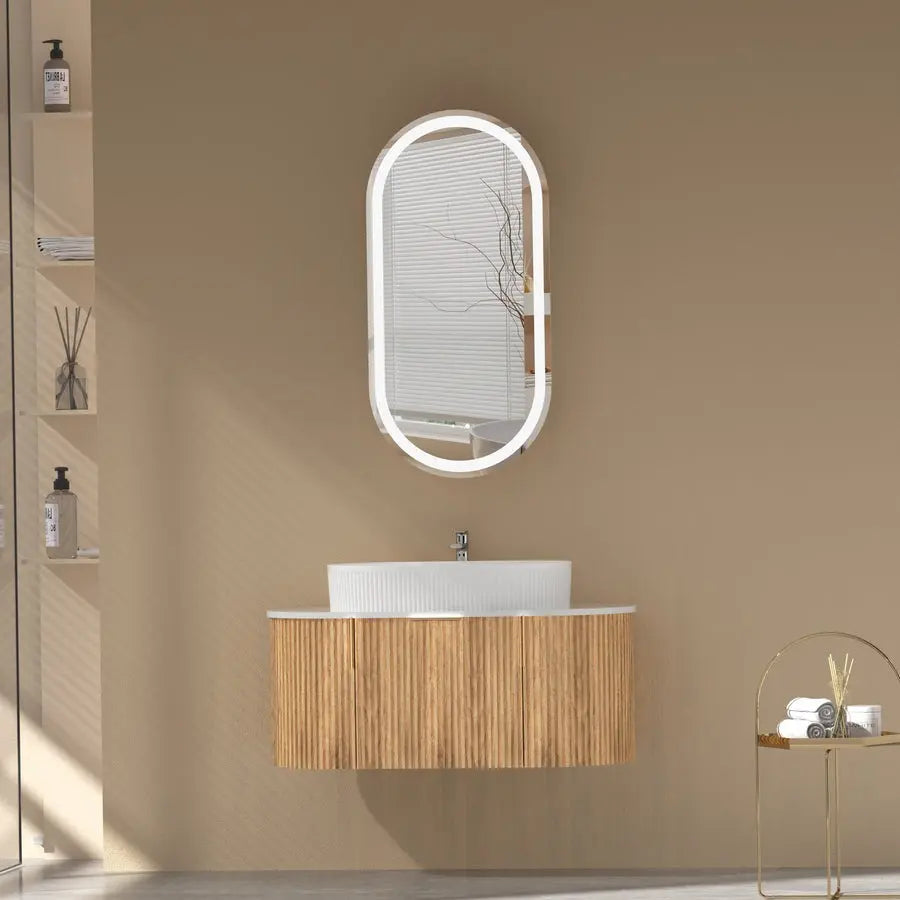Popular Categories

Best Bathroom Vanities for Australian Homes | Tezmo Buyer’s Guide
Share
How to Choose the Best Vanity for Your Australian Bathroom
A practical guide to stylish, durable, and regulation-friendly bathroom vanities
Introduction
When it comes to designing or renovating your bathroom, the vanity is one of the most important elements to consider. It’s not just a functional piece of furniture—it also defines the look and feel of your space. In Australian homes, where bathroom sizes and styles can vary greatly, choosing the right vanity can make a big difference in comfort, practicality, and even property value. In this guide, we’ll walk you through everything you need to know to choose the best vanity for your bathroom—one that suits your space, lifestyle, and the unique climate and building regulations of Australia.
1. Consider Your Space First
Before picking a vanity, measure your bathroom carefully. Ask yourself:
• How much space do I really have?
• Do I need a wall-hung (floating) vanity or a freestanding one?
• Will it fit comfortably without blocking doors or drawers?
Tip for small bathrooms: Wall-hung vanities are a great space-saver and make the room feel larger.

Tip for large bathrooms: Double-sink vanities offer convenience for families and couples.

2. Choose the Right Material (Compliant with Australian Standards)
Australia’s climate can be humid—especially in bathrooms—but it’s also important to meet national and state-level building standards.
Here are some of the most recommended and compliant materials:
• Moisture-resistant MDF (HMR MDF) – Affordable and widely used, with added protection against humidity and swelling.
• Plywood (moisture-resistant or marine-grade) – Strong, long-lasting, and accepted in most projects across Australia.
• Solid timber – Offers a luxurious, natural look. Needs sealing and occasional maintenance.
• Engineered stone tops – Durable, scratch-resistant, and perfect for modern homes.
Important note:
Many Australian states discourage or restrict the use of PVC in bathroom cabinetry due to environmental and safety concerns. When buying a vanity, ensure that it is PVC-free or fully compliant with local regulations.
Tip: Look for products with E0 or E1 formaldehyde ratings and make sure they comply with AS/NZS standards.
3. Match the Style to Your Home
Your vanity should reflect the overall design of your home.
• Modern/Minimalist homes – go for clean lines, matte finishes, and push-to-open drawers.
• Coastal homes – opt for whitewashed or light timber finishes for a relaxed, beachy feel.
• Heritage homes – Choose detailed cabinetry and warmer tones that complement traditional interiors.
Trending colours: Soft whites, light greys, natural oak, and matte black are popular across Australian bathrooms.
4. Storage, Storage, Storage!
A good vanity should offer smart and accessible storage options.
• Deep drawers for towels and larger items
• Hidden compartments for keeping clutter out of sight
• Mirror cabinets or wall storage to maximise vertical space
Tip: Vanities with functional storage can greatly reduce mess—especially helpful in family homes or rentals.

5. Pay Attention to the Benchtop
The top of your vanity isn’t just for looks—it needs to handle daily use.
• Ceramic tops – low-maintenance, budget-friendly, and easy to clean
• Stone or composite tops – more premium, highly durable, and resistant to heat and moisture
• Integrated basins – seamless and stylish, making cleaning easier
Tip: Avoid porous benchtops in busy bathrooms—they tend to stain and require regular sealing.
6. Consider the Australian Climate and Building Codes
Humidity, temperature changes, and strict building codes are part of Australian life.
• Use materials that resist moisture, heat, and mould
• Choose finishes that are easy to clean
• Make sure your vanity is compliant with AS/NZS standards and local council regulations
Tip: Ask your supplier if the product is rated for wet areas and meets NCC (National Construction Code) requirements.
7. Wall-Hung vs. Freestanding Vanities
Each type has its pros and cons:
Wall-hung (floating) vanities:
• Sleek and modern
• Great for small bathrooms
• Easier to clean underneath
• Requires solid wall fixing and wall plumbing

Freestanding vanities:
• Classic design
• Usually offers more storage
• Easier to install
• Compatible with standard floor plumbing

8. Installation and Plumbing Considerations
Your bathroom’s existing plumbing setup can affect what type of vanity is suitable.
• Wall plumbing is ideal for floating vanities
• Floor plumbing works best with freestanding units
Tip: Before buying, consult a licensed plumber to avoid expensive modifications or surprises during installation.
9. Legal and Environmental Considerations in Australia
To ensure your vanity is safe, sustainable, and legal to use:
• Avoid PVC-based cabinetry unless it’s explicitly marked as compliant with Australian codes
• Choose low-emission boards (E0 or E1 certified)
• Make sure materials are suitable for wet areas
• If the vanity includes taps or mixers, ensure they carry a WELS rating, as required by law
Conclusion
The right bathroom vanity can completely transform your space—not just visually but also in terms of functionality and value. By carefully considering your layout, storage needs, material quality, and compliance with Australian standards, you can invest in a vanity that will serve your home beautifully for years.
Looking to upgrade your bathroom?
Explore Tezmo’s collection of compliant, high-quality vanities designed for Australian homes. Practical, stylish, and built to last.







